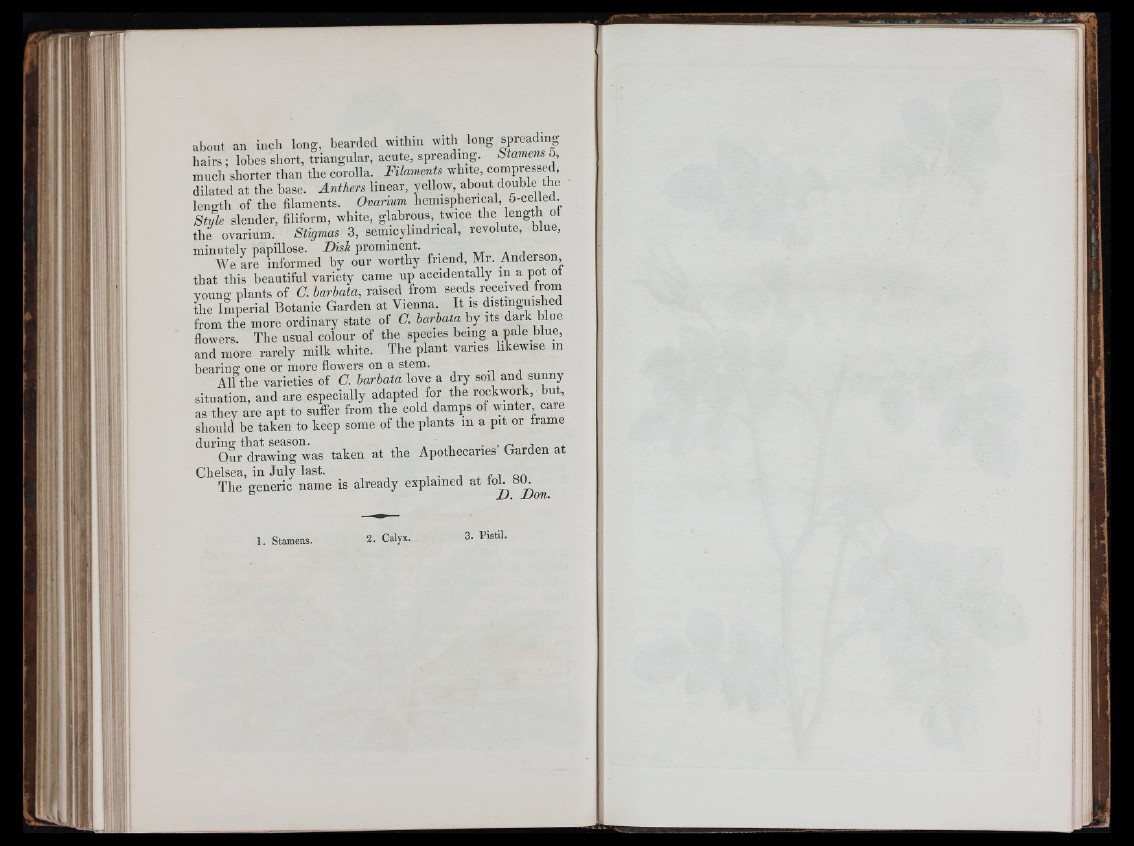
Mi
about an inch long, bearded within with long spreading
h a irs ; lobes short, triangular, acute, spreading. Stamens 5,
much shorter than the corolla. Filamcrds white, compressed,
dilated at the base. Anthers linear, yellow, about double the
length of the filaments. Ovarium hemispherical, 5-celled.
Style slender, filiform, white, glabrous, twice the length ot
the ovarium. Stigmas 3, semicylindrical, revolute, blue,
minutely papillose. Disk prominent.
We are informed by our worthy friend, Mr. Anderson,
that this beautiful variety came up accidentally in a pot ot
young plants of C. harhata, raised from seeds recewed from
ihe Imperial Botanic Garden at Vienna It is
from the more ordinary state of C. barbata by its dark blue
flowers. The usual colour of the species being a pale blue,
and more rarely milk white. The plant varies likewise in
bearing one or more flowers on a stem.
All the varieties of C. barbata love a dry soil and sunny
situation, and are especially adapted for the rockwork, but
as they are apt to suffer from the cold damps of winter care
should be taken to keep some of the plants m a pit or frame
during that season. . A t, • > n„,.rior. at
Our drawing was taken at the Apothecaries Garden at
Chelsea, in July last. i • u t
The generic name is already explained at to ^
MM
1. Stamens. 2. Calyx. 3. Pistil.